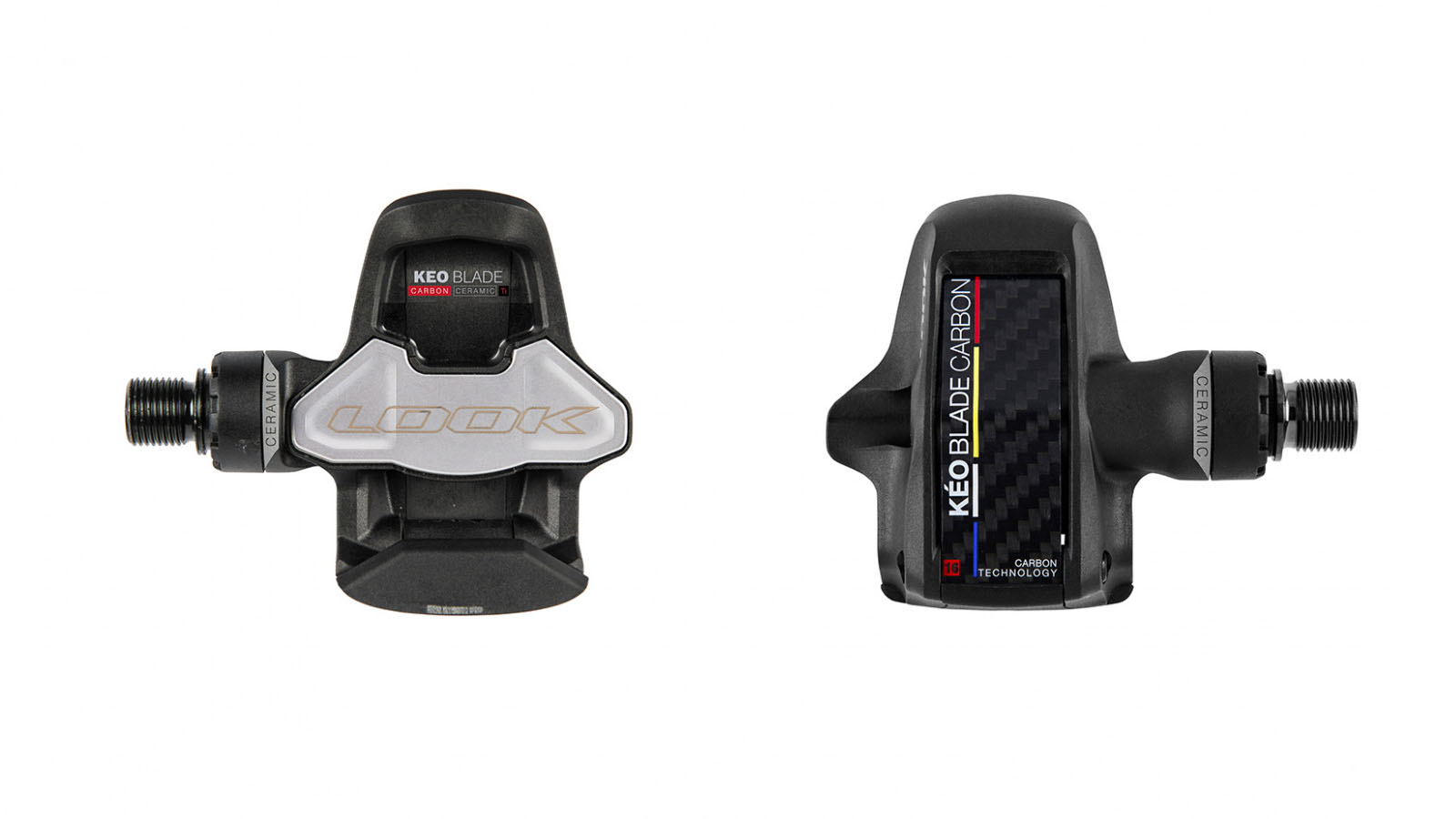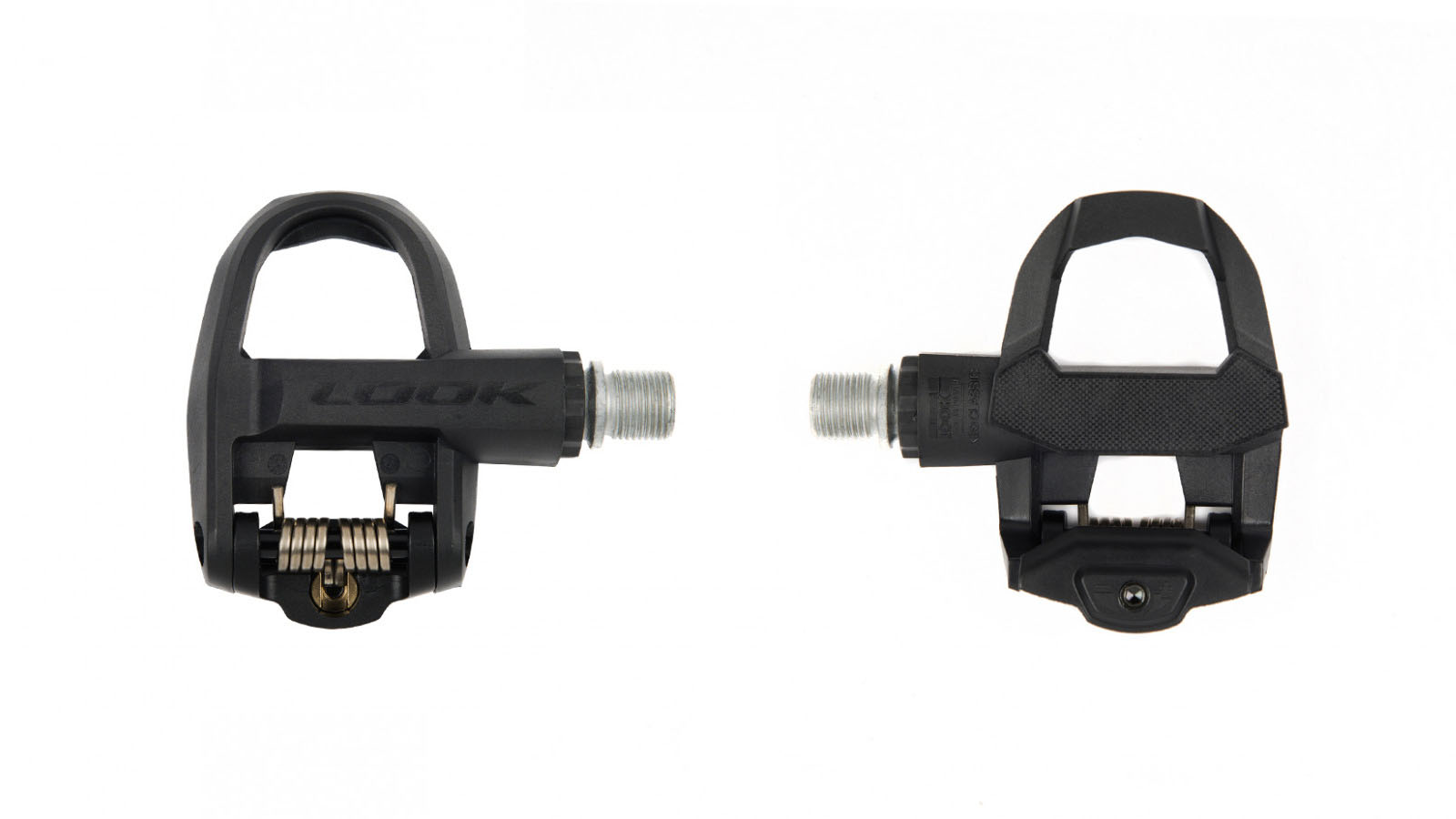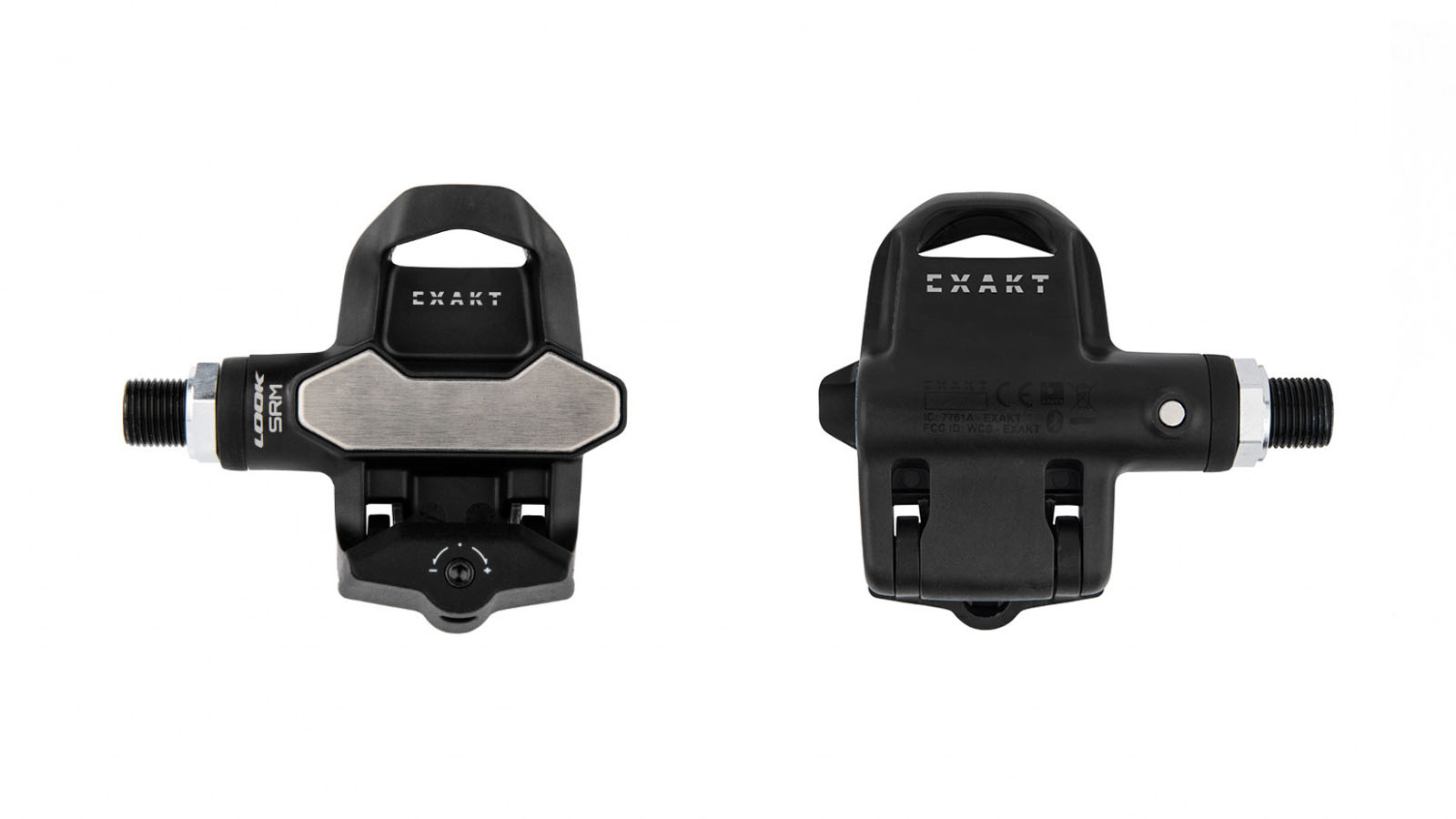Look pedals: range details, pricing and specifications
Cyclingnews' roundup of Look road pedals available to buy this year

Look was founded in 1951, after Jean Beyl invented the Look Nevada Dual Pivot ski binding, after breaking his leg using a fixed binding. The brand then adapted this technology for cycling, and in 1984 launched the first automatic release clipless pedals, the PP65, and were used by Bernard Hinault to win the Tour de France the following year.
Best road bike pedals: Our pick of the best performance road bike pedals
The best road bike saddles: Sit pretty on the best road saddles on the market
Best road bikes: Our pick of very best road bikes available today
Best road handlebars: how to choose the best handlebars for your bike
Look is prominent on the race circuit with Movistar, AG2R La Mondiale, UAE Team Emirates, Lotto-Soudal, Astana, and Confidis are all pushing the french brand's pedals.
Read on for a rundown of Looks road pedals available today or jump to the bottom for everything you need to know.
Skip to: What to know about Look road pedals
Look road pedals available today

Keo Blade Carbon Ceramic Ti
Specifications
Reasons to buy
Reasons to avoid
When it comes to bike industry buzzword bingo, Look’s Keo Blade Carbon Ceramic Ti will fill the entire card. Using Look’s Carbon Blade leaf-spring technology, the Keo Blade Ceramic Ti tips the scales at under 100g per side and features a carbon pedal body.
Beyond the weight savings, Look says using a blade instead of a traditional spring system also makes for a more aerodynamic pedal, and the bowing of the blade when un-clipping means the required disengagement torque is reached sooner, allowing for faster cleat release. However, with the carbon blade situated on the belly of the pedal, it is susceptible to damage, and we've even seen a few snap. The pedals come with a 16- and 12Nm blade in the box with a 20Nm version sold separately.
A titanium spindle spins inside ceramic bearings, which the brand says will last four to six times longer than comparable stainless steel bearings, and create 18 per cent less friction than a traditional bearing. These pedals also see a new double seal system that IPX7 rated for full immersion and IPX6 with a rotating pedal exposed to water jets. The Keo Blade Carbon Ceramic Ti features a 67mm contoured pedal platform, which mostly eliminates the rocking experienced with previous versions, and creates a 700mm² platform.

Keo Blade Carbon Ceramic
Specifications
Reasons to buy
Replacing the Titanium spindle with a Chromoly axle, the Keo Blade Carbon Ceramic is almost identical to its more expensive sibling, claimed to weigh 110g per side.
The Keo Blade Carbon Ceramic sees the same carbon leaf-spring retention, carbon body, contoured stainless steel pedal platform, and near waterproof ceramic bearings. With a 700mm² pedalling platform, they come with two sets of 12Nm blades, with the 16- and 20Nm sold separately.

Keo Blade Carbon
Specifications
Reasons to buy
Occupying the base level of Look's Keo Carbon range, the Keo Blade, sees a carbon pedal body, carbon leaf-spring-based retention, a Chromoly spindle, and stainless steel bearings. While the spec list doesn’t have quite as many bullet points as the higher-end pedals; the Keo Carbon still feature the 67mm body width, 700mm² platform area, the all-important contoured stainless pad, and are claimed to weigh 115g per side.
Out of the box, the Keo Blade Carbon comes with the 8Nm release tension blade installed, with a 12Nm included in the box. As they are a paired down version of the more expensive models, stronger blades can be installed if needed.

Keo 2 Max Carbon
Specifications
Reasons to buy
Reasons to avoid
Using the same cleat, the Keo 2 Max Carbon borrows many of the design cues from the Keo Blade; except instead of a carbon leaf spring retaining the cleat, the pedals have a standard steel coil spring for cleat retention. It adds some weight to the pedal but makes adjusting the release tension a job that can be done on the roadside, and also makes the pedal settle in the right orientation when you unclip, so you won’t need to paw at it before you clip in.
As the name suggests, the pedal body is made from carbon, and the pedals are claimed to weigh 125g per side. The platform is 60mm wide, making for a 500mm² platform area, though the stainless steel pad lacks the contouring found on the Keo pedals, which can create the sloppy connection and rocking that has plagued the french pedals for years.

Keo 2 Max
Specifications
Reasons to buy
Reasons to avoid
The Keo 2 Max is essentially the same as its carbon compatriot, except for the price, and the composite pedal body, which adds 5g of weight. It has the same spring-loaded and adjustable cleat retention, 500mm² pedal platform, and stainless steel pad.
That additional five grams of weight also saves you $35 off the retail price.

Keo Classic 3
Specifications
Reasons to buy
Reasons to avoid
Not everyone who is after a set of clipless pedals is counting grams or knows their watts/kilo, and cares whether the pedal bodies are carbon, composite or metal. For riders just making the swap from flats to clipless pedals, the Keo Classic 3 is an ideal stepping stone into clipless pedals. Priced at $60, they offer a composite body, durable Chromoly spindle, and adjustable release tension, so you get your foot out in a panic before you tip over.
The platform is 60mm wide and has an area of 400mm², and they are claimed to weigh 130g per side

Keo Classic 3 Plus
Specifications
Reasons to buy
The Keo Classic 3 Plus builds on the Classic by adding extra stainless steel around the contact area for improved longevity, which Look says also adds stiffness to the pedal body — and 10g per side.
It still offers the same coil spring with adjustable release tension, Chromoly spindle, and 400mm² platform area.

Keo Exakt
Specifications
Reasons to buy
Reasons to avoid
Power meter pedals are gaining in popularity, and Look has joined forces with SRM to create the Exakt. Available as a single side or double side pedal, the Exakt is based on the previous version Keo Max pedal body and sees an adjustable steel coil spring providing the release tension.
All of the electronics are enclosed in the steel axle to read power and spin on an oversized ball bearing and needle bearing. To prevent water ingress, the axel has a sealed blue clap on the outside, and a double joint system inside, that is 1PX6/7 certified. The Bluetooth and ANT+ enabled power meters are claimed to be accurate to +/-1.5 per cent and can output power, cadence, torque analysis, and L/R balance. The pedals are USB rechargeable and claimed to hold enough juice for 100 hours of ride time.
What to know about Look road pedals?
1. Cleats
Any pedal that has Keo in the name will work with the Keo cleats while some of the legacy pedals, third-party brands and many spin bikes use the older style Delta cleats.
Look makes the Keo cleats in a standard and grip version, the latter has small rubber pads on the bottom edge for walking traction. If you’re looking to buy a set of Keo Blade pedals, we would strongly recommend factoring a set of Keo Grip cleats into the price, as walking on the standard cleats can be downright dangerous. All versions of the Keo 2 Max and Keo Classic come with the grip cleats. Your guess is as good as ours as to why Look does this, but tread carefully.
The Keo and Keo grip cleats are available in three float options, 0-degree (black) 4.5-degree (grey) and 9-degree (red). Every set of pedals comes with the 4.5-degree float grey cleats.
Look also makes changing cleats painless and straightforward with its ‘memory positioner,’ but your shoe will need to have the fourth hole and mounting hardware to take advantage
2. Contoured pad
For many years Look pedals have suffered from a bit of side to side rocking, which as the cleats wear out, and some grit finds its way into the system, would eventually lead to squeaking.
The culprit was the flat stainless steel pad on the pedal body. It's something that was widely reported, and we even saw riders going as far as using a strip of bar tape to fill the gap and tighten up the connection. Finally, on its latest Keo Blade pedals, Look has quietly introduced a contoured stainless steel pad that fixes the problem.
3. Blade
Look’s flagship pedals utilise a carbon leaf spring for cleat retention rather than a steel coil spring as used on most other pedal systems. The main advantage here comes in the form of weight; a thin blade of carbon is significantly lighter than a steel spring. This carbon leaf spring also allows the pedal to cut a svelte silhouette which is said to be more aero and claimed to make for quicker engagement and disengagement.
Situated on the bottom of the pedal body, Look uses these leaf springs to release tensions from 8Nm, all the way up to 20Nm. Swapping tensions is a simple process even for the hamfisted home mechanic but it's not a job that you would want to do roadside. Being on the bottom of the pedal body, they are square in the firing line of road crud kicked up off your tires, and we have seen them sustain damage and even break. The other downside is the weighting of the pedals which can make taking off from a red light a frustrating exercise as you paw at the platform hoping to clip in.
Cyclingnews sorts through thousands of deals to offer the best prices from the most trustworthy retailers. While all of our reviews are researched and written independently, Cyclingnews is a participant in a number of affiliate programs designed to provide a means for sites to earn fees for linking to online retailers.
The latest race content, interviews, features, reviews and expert buying guides, direct to your inbox!
Based on the Gold Coast of Australia, Colin has written tech content for cycling publication for a decade. With hundreds of buyer's guides, reviews and how-tos published in Bike Radar, Cyclingnews, Bike Perfect and Cycling Weekly, as well as in numerous publications dedicated to his other passion, skiing.
Colin was a key contributor to Cyclingnews between 2019 and 2021, during which time he helped build the site's tech coverage from the ground up. Nowadays he works full-time as the news and content editor of Flow MTB magazine.